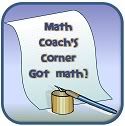 How do I help low-level readers overcome the meltdowns of defeated attitudes when they are expected to read complex texts?
How do I help low-level readers overcome the meltdowns of defeated attitudes when they are expected to read complex texts? Where do I find passages that will motivate students to read demanding texts and match CC standards?
Where do I find passages that will motivate students to read demanding texts and match CC standards?
What tech tools will help me validate my chosen material?

As I begin to plan reading lessons to align with Common Core State Standards (CCSS), I find myself struggling to understand the new level of text complexity demanded by higher expectations. My work with a Title I population and low-level readers prompts my hesitation to thrust the reality of CCSS upon deficient students. Varied reasons place these children far below grade level. Most of them stumble with every line of my current instructional text.
My first response after throwing out my Accelerated Reader tub labels, was to look for a grade level title list within the new "complex reading" formula that would facilitate my lesson planning. While there are suggested book and poetry selections available, the choices of material according to the CCSS "are best made by teachers employing their professional judgment, experience, and knowledge of their students and the subject." (Appendix A/4) 
My first response after throwing out my Accelerated Reader tub labels, was to look for a grade level title list within the new "complex reading" formula that would facilitate my lesson planning. While there are suggested book and poetry selections available, the choices of material according to the CCSS "are best made by teachers employing their professional judgment, experience, and knowledge of their students and the subject." (Appendix A/4)

Mary Brow's blog, "What Is the Common Core Canon?", gives explanations and advice to help teachers determine literature to choose in Common Core lessons. She breaks down the three criteria of QUALITATIVE, READER TASK CONSIDERATIONS, and QUANTITATIVE texts.

Her comforting words and suggestions leading to the use of shorter pieces of complex passages including magazaine articles, reminded me of my love for Highlights magazine. I've collected past issues
through Ebay for several years. Usually, I find they are cheapest in large lots. I'm always impressed with each issue's material that matches passages on standardized tests. However, the articles are not labeled with Lexile levels.

To find the Lexile, first go to the Lexile Analyzer site. Registration is required (FREE). After you have logged-in, you will see a list of steps on the left of the screen. Your document MUST follow the generator's list of requirements. The most important factors: eliminate any non-sentence text features, and convert the document to a .TXT format. I use Notepad to prepare documents for uploading.
Also, I was unsure regarding copyright issues. How can I distribute the lesson both to students and other teachers? The FAIR USE GUIDELINES allow for a copy per student of a magazine article, yet limit the number of such uses to nine per class term. The copy of the article couldn't be included in a shared lesson plan, but could be referenced.
I'm still debating exactly how to incorporate the magazine material consistently. Possibly, I could use parts of the passage in SmartBoard lessons. If you have ideas on the topic of copyright and FAIR USE, please add your comments.
I'm still debating exactly how to incorporate the magazine material consistently. Possibly, I could use parts of the passage in SmartBoard lessons. If you have ideas on the topic of copyright and FAIR USE, please add your comments.
This process was complicated and time-consuming for me. Because I used magazine articles without image to text software, the first step was typing . . . no, it was choosing an appropriate passage for my lesson. Then, the typing of the article in the required format. (There are scanners available to convert the printed article to a .txt document! I haven't used the FREE OCR software. And, the Epson text converting scanner is very expensive.) Please comment if you have had success with converting column print to text.
I made the most of my typing time to become familiar with the material and start the process of creating questions and products to use in the lesson.
Link Additions:
For examples of proposed testing item samples . . . here's an assessments of Common Core guide.
Achievethecore.org has a listing of sample close reading exemplars.





















0 comments:
Post a Comment